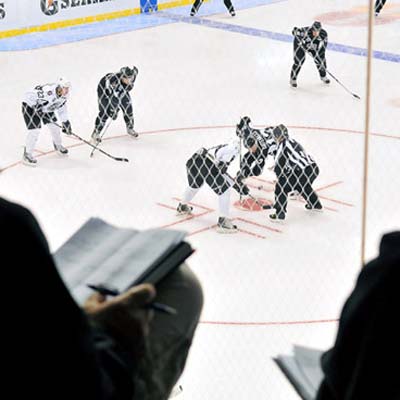There has been a back and forth going between Tyler Dellow of mc79hockey and David Johnson of HockeyAnalysis.com about Zone Start % (ZS%) and it’s impact on play and, in particular, the impact of ZS% on Fenwick For % (FF%) or Corsi For % (CF%). There discussion so far is here (Dellow), here (Johnson) and here (Dellow)..
I appreciate the work of both but I prefer to think of what is gained by an individual zone start. Bruce McCurdy is on the right track, in my opinion, with this as quoted by Dellow in his first post. For the discussion below I’m using data from 2011-12 and 2013 regular seasons through April 14, 2013. I’m using 5v5 and 4v4 data and I’m looking at all non-stoppage events in the RTSS files. That’s n=381,333 events in total. Our outcome metric is the NP20 which is the net expected value of a goal in the 20 seconds after the event from the Total Hockey Ratings (THoR) paper. We’re using an updated (since that paper) THoR model which includes a rink effects and score effects. Latest results can be found on the THoR page. Estimates given below are from running the THoR even strength model.
There are some benefits to the THoR model and one of them is that we get an estimate of the impact of an ZS per play on expected goal differential, at least as measured by NP20. That estimate for the effect of a ZS on subsequent outcomes in the most recent THoR is about 0.0055, meaning that for every additional play that started in the Offensive Zone, the expected goal differential gained is 0.0055. As Gaelan noted in the comments of the first of Dellow’s posts, this is just the sort of thing that multiple regression should be used for.
The value 0.0055 seems small to me as a first pass. However, for a player like Henrik Sedin or Jordan Staal who were on the ice for over 7000 plays during this period, the impact can be significant. Comparing the value of a ZS to the impact of home ice on a given play (0.0011), we see that a ZS is worth about five times as much as home ice. Now this is at even strength and the home ice effect appears in every play and balances out generally as teams play as many home games as away games. That ZS is worth 5 times home ice appears to be consistent across years that we have studied.
To put these numbers in context, we inflate them to give us a games worth. Home Ice at Even strength is on average during this period about 210 plays per game and that works out to a goal differential favoring the home team of 0.23 (210*0.0011) per game. ZS’s appear in about 68 plays per game or about 0.37 (68*0.0055) goals per game for the team starting in their offensive zone. This does not show up blantantly in a game but it does have an impact over the course of a season. Unlike home ice, ZS’s don’t even out over the course of a season. Unfortunately using the current ZS% we don’t get a sense for the differential in the number of ZS’s for a given player so it is hard to assess this with an example. Hypothetically, someone who has approximately 200 more ZS’s in a given season should yield an extra goal differential.
Another way to think of ZS is that the value of Zone Start per play is the same as that for the top players in the league. So moving the start of your shift from the Neutral Zone to the Offensive Zone (or similarly from the Defensive Zone to the Neutral Zone) is like taking replacing an average player with a top player in the league. Think replacing a Jay McClement with Jonathan Toews for a shift or replacing Trevor Daley with Shea Weber.
However you think about it, ZS’s are an important factor in analyzing player value. Models like THoR, those of Brian MacDonald and others can assess that effect and can isolate the impact of one factor among many.
One more thought from watching some games recently is that it seems that some teams, especially Boston — being in the northeast US, I get to see plenty of them — instead of dumping and chasing behind the net, shoot at the goalie and charge toward the goalie. They end up with a ZS from the goalie holding the puck.
Kudos to Dellow and Johnson for starting this conversation.




Leave A Comment